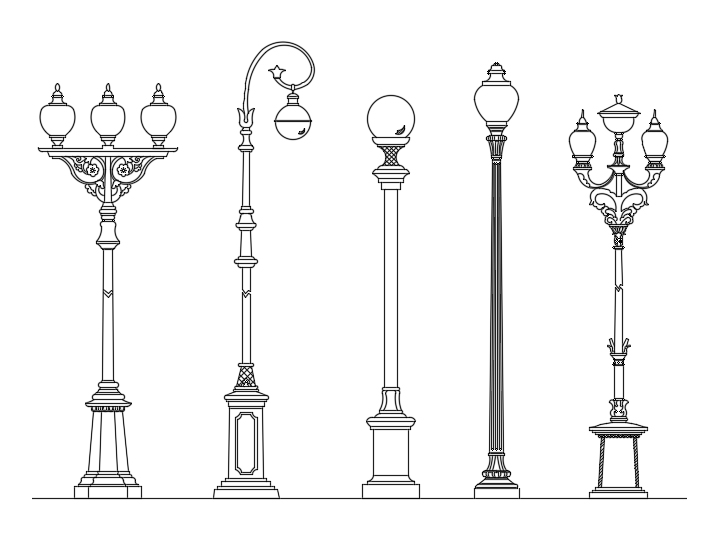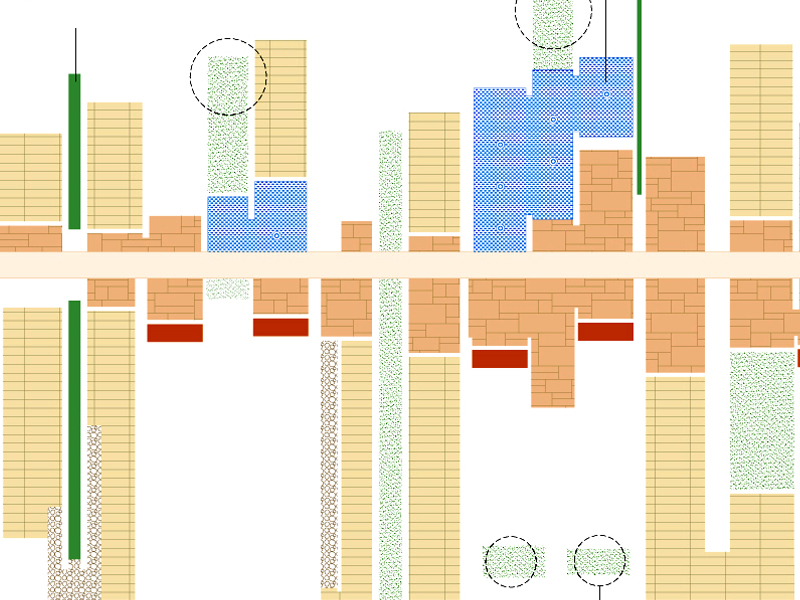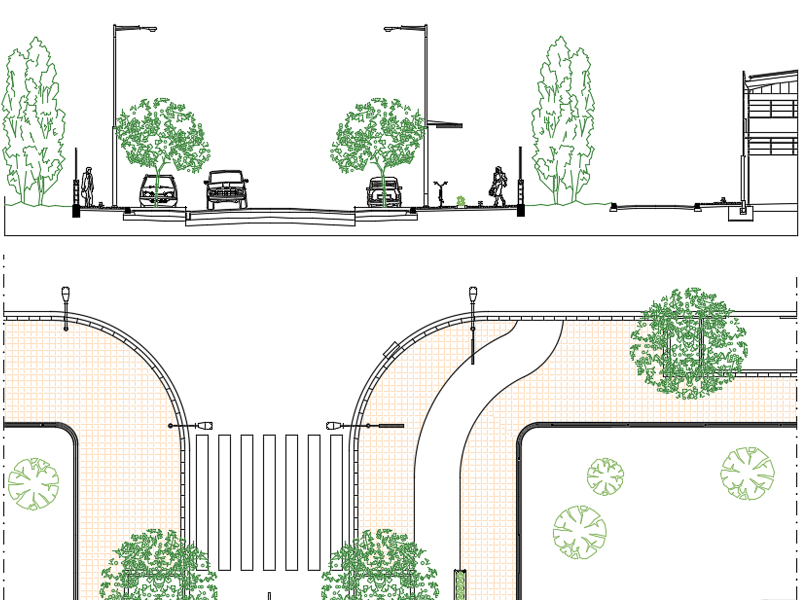Lighting parks and public gardens
Features - Functions - Types of light points
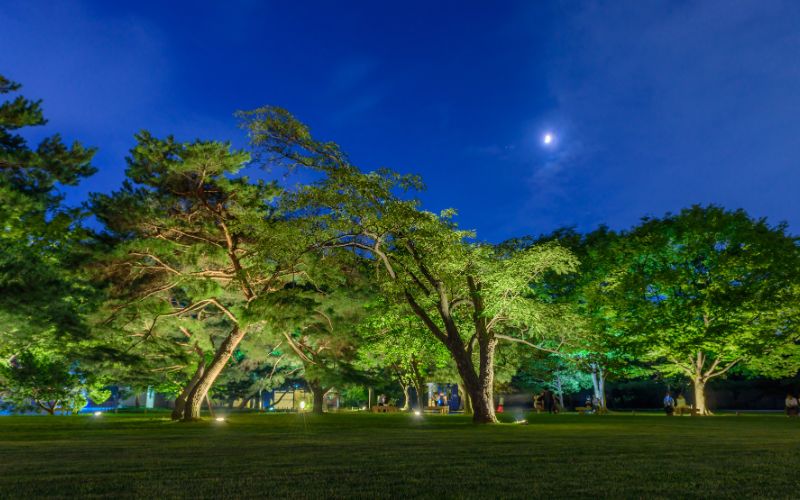
Lighting in urban public parks and gardens is of fundamental importance in ensuring safety, beauty and usability of these outdoor spaces. Below we will explore the characteristics of an effective lighting system for parks, the functions it performs, the most common types of light points, the factors to consider when designing, and much more. In the end, it will be evident how accurate lighting design can help create welcoming and safe outdoor spaces.
The importance of lighting in urban public parks and gardens
Lighting plays a crucial role in urban parks and public gardens, also bringing numerous benefits.
First of all, it contributes to the safety of visitors, creating a bright and welcoming environment during the night. This encourages a greater frequency of use of the spaces, improving the quality of life of the city’s inhabitants.
Furthermore, effective lighting can highlight the architectural and landscape features of public parks and gardens, making them even more beautiful and attractive to visitors. This can foster a sense of pride and belonging to the community, encouraging the care and enhancement of these spaces.
Finally, well-designed lighting can contribute to the sustainability of urban public green spaces. The use of low energy consumption technologies, such as LED lamps, can reduce environmental impact and lighting management costs.
The characteristics of effective lighting for parks and public gardens
Effective lighting for parks and public gardens must possess some key characteristics.
First of all, it must be uniform and ensure homogeneous distribution of light over the entire area. This is to prevent some spaces from being uninviting or unsafe at night.
Furthermore, the lighting should be adjustable according to different needs and times of the day. For example, brighter lighting may be necessary during the evening hours to ensure gaming and sports activities, while during the night hours a softer light may be preferable to create a relaxing atmosphere.
Finally, lighting should be energy efficient. The use of low energy consumption technologies, such as LED lamps, can help reduce the running costs and environmental impact of lighting.
The functions of lighting in urban public parks and gardens
Lighting performs several important functions in urban parks and public gardens. First of all, it contributes to the tranquility of visitors, allowing them to move around safely even during the night hours. Adequate lighting can prevent accidents, thefts, or other safety issues that could occur in dimly lit areas.
Furthermore, lighting performs an aesthetic function, highlighting the architectural and landscape characteristics of the area. It can be used to highlight trees, fountains, flower beds or other structures that contribute to the beauty of the place.
Another important function of lighting is to create a pleasant and welcoming atmosphere. Light can influence our mood and create a relaxing or stimulating atmosphere, depending on the needs of park users.
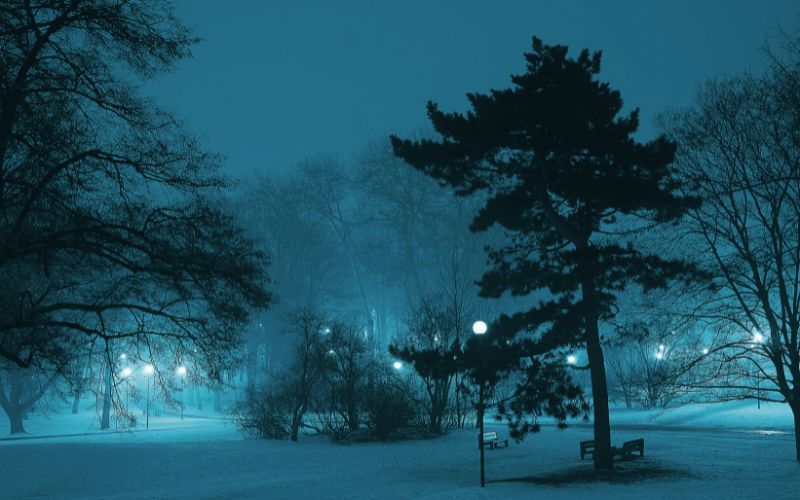
Types of light points used in parks and urban public gardens
In urban public parks and gardens, different types of outdoor lighting fixtures are used, capable of satisfying different lighting needs. Some common examples include:
- Recessed spotlights: these light points are inserted into the ground or architectural elements to illuminate specific areas or points of interest.
- Streetlights: Streetlights are often installed along paths in public parks and gardens to provide general lighting and ensure the safety of visitors.
- LED lights: LED lamps are increasingly used for their energy efficiency and the ability to adjust the light intensity.
- LED Strips: These thin strips of light can be used to create decorative lighting effects, for example along the edges of flower beds, fountains or walkways.
It is important to choose the type of light point best suited to the specific needs of the park or public garden, taking into account the desired effect, energy efficiency and maintenance needs.
Factors to consider when designing lighting for urban public parks and gardens
Some of the main factors to consider when designing lighting for urban parks and public gardens include:
- Choice of light points: it is important to select the light points most suited to the characteristics of the park or public garden, taking into account the size of the area, the architectural characteristics, the lighting needs and energy efficiency.
- Light distribution: The lighting should be uniform and ensure even distribution of light over the entire area. This can be achieved through correct arrangement of the light points.
- Lighting control: the possibility of regulating the light intensity and the switching on and off time of the lighting can help improve energy efficiency and adaptability to the different needs of the park or public garden.
- Safety and maintenance: Lighting should be designed to ensure visitor safety and facilitate maintenance operations. For example, light points should be protected from atmospheric agents and from any accidental damage.
By taking these factors into account when designing, it is possible to create an effective and quality lighting system for parks and green areas.
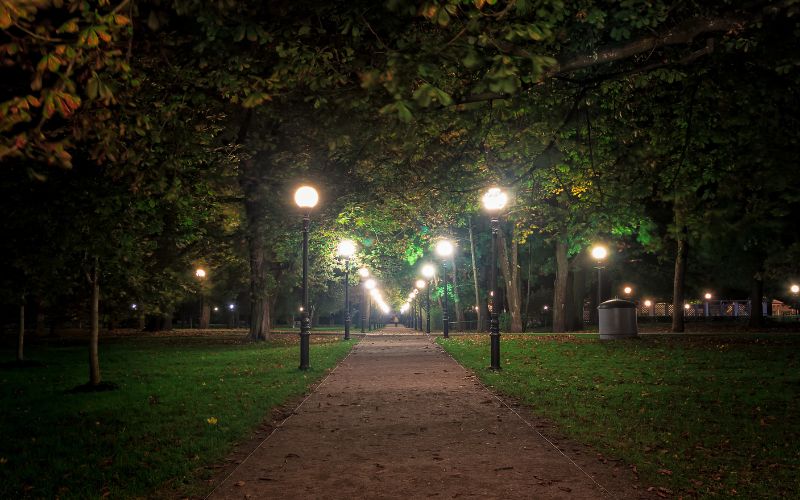
The role of technology in improving the lighting of urban parks and public gardens
Technology plays an increasingly important role in improving the lighting of urban parks. The introduction of innovative solutions has made it possible to obtain better results in terms of energy efficiency, flexibility and lighting control.
For example, LED lamps have become increasingly popular due to their energy efficiency and ability to regulate light intensity. LED lights offer longer life and require less maintenance than traditional incandescent or fluorescent lamps.
Furthermore, motion sensor technology can be used to adjust the lighting on and off based on the presence of people. This helps improve energy efficiency and reduce operating costs.
Finally, smart lighting solutions technology allows you to control and manage lighting centrally. This allows you to adapt the lighting to the different needs of the park or public garden, improving management efficiency and flexibility.
Conclusions – Create welcoming and safe outdoor spaces through careful lighting design
In conclusion, the lighting of urban public parks and gardens plays a fundamental role in ensuring safety, beauty and functionality of these outdoor spaces. Effective lighting must possess certain characteristics, such as uniformity, adjustability and energy efficiency.
Lighting serves several important functions, including keeping visitors safe, highlighting aesthetic features, and creating a pleasant atmosphere. The choice of the most suitable lighting fixtures, light distribution, sustainability and lighting control are all key elements in the design of a lighting system for urban public parks and gardens.
With careful lighting design it is possible to create urban public spaces that can also be used in the evening and at night, without compromising the safety and beauty of the area.
Cover photo: tawatchaiprakobkit da Getty Images






























































